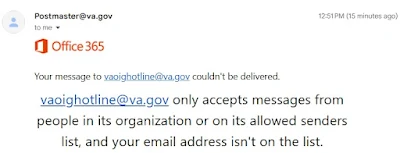The Affordable Care Act (ACA), commonly known as Obamacare, has significantly expanded access to mental health services in the United States, particularly for working-class individuals and families. The expansion of Medicaid and marketplace plans has made therapy and psychiatric care more accessible. However, the infrastructure supporting this mental health revolution is complex, under-resourced, and increasingly influenced by private equity. As more Americans seek care, questions arise about who is delivering that care—and whether the system prioritizes well-being or profits.
The Workforce Patchwork
The delivery of mental health services today relies on a varied network of professionals. In community clinics, federally qualified health centers, and outpatient networks, the bulk of therapeutic care comes from mid-level clinicians: Licensed Clinical Social Workers (LCSWs), Licensed Professional Counselors (LPCs), and Marriage and Family Therapists (MFTs). These are master's-level professionals who carry substantial educational and clinical training but are frequently underpaid and overworked.
Psychiatric Nurse Practitioners have also filled a critical gap, often handling medication management in lieu of psychiatrists, especially in rural and underserved areas. Meanwhile, case managers and peer support workers—some with minimal formal education—are tasked with providing wraparound services like housing support, job placement, and crisis management.
Psychiatrists and doctoral-level psychologists, though highly trained, are in short supply and are often unwilling to accept Medicaid or ACA plan reimbursements. This leaves many lower-income patients with few options for specialized care.
Enter Private Equity
In recent years, private equity (PE) firms have aggressively moved into the mental health space. Attracted by rising demand for services and relatively stable reimbursement streams from public insurance programs, PE investors have acquired numerous outpatient mental health clinics, telehealth platforms, and addiction treatment centers. Research indicates that PE firms now account for as much as a quarter of practices providing behavioral health services in some states (OHSU, 2024).
While this influx of capital has allowed for rapid expansion, it has also introduced new pressures on the workforce. To maximize returns, many PE-backed firms rely heavily on newly licensed clinicians or even graduate students under supervision. In some cases, providers are pushed into independent contractor roles to reduce labor costs and avoid benefit obligations.
Clinicians report being pressured to increase their patient loads, reduce session times, and adhere to standardized scripts or protocols designed for efficiency, not individualized care. Turnover is high, and burnout is common. A 2023 survey by the American Psychological Association found that over 60% of mental health practitioners reported experiencing symptoms of burnout (Therapy Wisdom, 2024).
The Role of Robocolleges in the Mental Health Pipeline
The rise of online, for-profit, and quasi-public "robocolleges"—such as Walden University, Purdue University Global, the University of Phoenix, Capella University, and others—has significantly shaped the labor pipeline for mental health services. These institutions mass-produce degrees in psychology, counseling, and social work, often catering to nontraditional and working adult students with limited time and financial resources.
Programs are designed for scale and efficiency, not necessarily for rigor or clinical depth. Courses are often asynchronous, adjunct-taught, and heavily standardized. Clinical placements and supervision, vital components of a therapist’s training, are sometimes outsourced or inadequately supported—leaving graduates with inconsistent real-world experience.
These institutions also disproportionately enroll students from lower-income and minority backgrounds, many of whom take on significant debt for degrees that may lead to low-paying, high-stress jobs in underfunded clinics or PE-owned mental health companies.
While robocolleges expand access to credentials, they may also contribute to a deprofessionalized, precarious workforce—one in which therapists are underprepared, underpaid, and overextended. Their graduates often fill the lower rungs of the mental health care ladder, working in environments where quality and continuity of care are compromised by systemic churn.
Quality and Equity in the Balance
The result is a mental health system that, while more accessible than in previous decades, is increasingly stratified. Working-class patients often receive care from entry-level or overburdened professionals, while wealthier clients can afford private practitioners who offer more time, continuity, and personalized care.
This imbalance is further complicated by a lack of oversight. Licensing boards and state agencies struggle to monitor the growing number of clinics and telehealth services, many of which operate across state lines or rely on algorithms to triage patients.
Meanwhile, the very people the ACA aimed to help—those juggling low-wage jobs, family stress, and systemic disadvantage—are left in a system where care may be quick, transactional, and occasionally substandard.
The Role of Traditional Higher Education
Traditional colleges and universities play a dual role: they continue to train therapists and counselors in more rigorous academic environments, but they also face growing pressure to "compete" with robocolleges in terms of cost, speed, and flexibility. At the same time, these institutions increasingly outsource student counseling services to external mental health platforms—some of them owned by private equity firms.
Thus, the cycle continues: higher education feeds the mental health system, while also adopting many of its structural compromises.
Conclusion
The expansion of mental health coverage under the ACA is a major public policy achievement. But access alone is not enough. The quality of care, the working conditions of providers, and the growing influence of profit-seeking investors and education mills all demand greater scrutiny.
For working-class Americans, mental health has become another arena where the promise of care often collides with the reality of austerity and privatization. And for those training to enter the profession, especially through robocolleges, the path forward may be just as precarious.
References:






